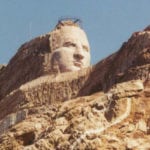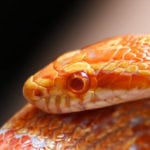 Technology
Technology  Technology
Technology  Our World
Our World 10 Ways Icelandic Culture Makes Other Countries Look Boring
 Misconceptions
Misconceptions 10 Common Misconceptions About the Victorian Era
 Mysteries
Mysteries 10 Strange Unexplained Mysteries of 2025
 Miscellaneous
Miscellaneous 10 of History’s Most Bell-Ringing Finishing Moves
 History
History 10 Great Escapes That Ended Right Back in Captivity
 Weird Stuff
Weird Stuff 10 Fascinating Things You Might Not Know About Spiders
 Food
Food 10 Everyday Foods You Didn’t Know Were Invented by the U.S. Military
 History
History 10 Odd Things Colonial Americans Kept at Home
 Weird Stuff
Weird Stuff 10 Superstitious Beliefs That Once Consumed Entire Cultures
 Technology
Technology 10 Scientific Breakthroughs of 2025 That’ll Change Everything
 Our World
Our World 10 Ways Icelandic Culture Makes Other Countries Look Boring
 Misconceptions
Misconceptions 10 Common Misconceptions About the Victorian Era
Who's Behind Listverse?

Jamie Frater
Head Editor
Jamie founded Listverse due to an insatiable desire to share fascinating, obscure, and bizarre facts. He has been a guest speaker on numerous national radio and television stations and is a five time published author.
More About Us Mysteries
Mysteries 10 Strange Unexplained Mysteries of 2025
 Miscellaneous
Miscellaneous 10 of History’s Most Bell-Ringing Finishing Moves
 History
History 10 Great Escapes That Ended Right Back in Captivity
 Weird Stuff
Weird Stuff 10 Fascinating Things You Might Not Know About Spiders
 Food
Food 10 Everyday Foods You Didn’t Know Were Invented by the U.S. Military
 History
History 10 Odd Things Colonial Americans Kept at Home
 Weird Stuff
Weird Stuff 10 Superstitious Beliefs That Once Consumed Entire Cultures
10 Bizarre Units of Measurement
When we compare things, the best way to do so is to measure their attributes. Which is more expensive? Which is taller? Which takes longer? From a very young age, children naturally begin to ask these questions when they are given choices. Today, 95% of the world uses the metric system, but this was not always so. A colorful variety of measurements have been used in the past. Many of these are easily recognized, however, there are some which are old-fashioned, foreign, or downright bizarre. Here are just ten. Oh – and if you like this list, you will probably also like 10 Unusual Scientific Scales.
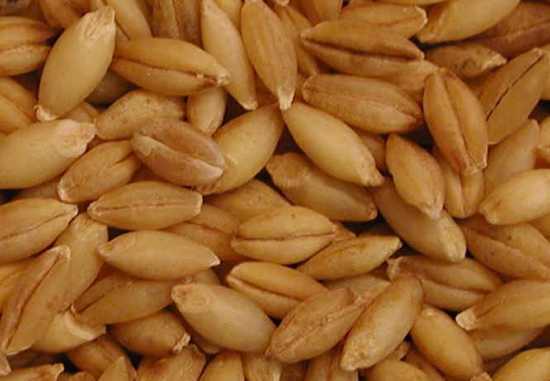
A barleycorn was an Anglo-Saxon unit of length. It was originally the length of an actual barleycorn, but became standardized at what is now 8.5mm. The imperial inch measurement was originally called an ynch which was defined as being equal to three barleycorns. Rather nicely, a quarter of a barleycorn is called a poppyseed. Barleycorns are still used today as the unit of shoe sizes. A size 8 is 1 barleycorn larger than a size 7. Originally, the maximum size was set at 13 which was 13 inches exactly, and all other sizes were determined by counting in barleycorns backwards from 13. A size 4, by this system, would be 9 barleycorns less than 13 inches, that is, 10 inches or 25cm. These days sizing varies somewhat from country to country, but barleycorns are still used for shoe sizes in the UK and the USA.

This was an English method of measuring that was based on hand-spans and other hand measurements. A span was the distance from the thumb to the end of the little finger when the digits were stretched out, standardized at 23cm or 9 inches. A basic hand was 10cm, or 4 inches. A palm was 7.5cm or 3 inches. A finger was 2.2cm or 7/8 of an inch, but somehow a nail was larger than a finger, being 5.7cm or 2 and 1/4 inches. A digit was slightly less than a finger at 1.9cm, 3/4 of an inch. An ell was the distance from an outstretched fingertip to the opposite shoulder, 114cm. Records of these measurements go back for over a thousand years.
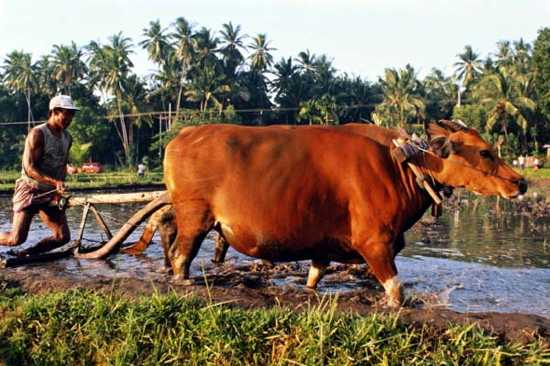
English farmers would measure the area of their land based on how much their animals could plough. Originally, an acre was defined as the maximum area that could be ploughed by an ox in a single day, roughly 4047 square metros. An oxgate was the area an ox could be expected to plough over a whole year, equal to 15 acres. A virgate was the area two oxen could plough over a year, 30 acres. A carucate was the area eight oxen could plough over a year, 120 acres. A furlong, which was a unit of distance rather than area, was a contraction of ‘one plough’s furrow long’ and was how far oxen could plough at a time. 1 furlong is slightly over 200m.

Volumes of alcohol had their own particular names. In Northern England, as well as being a small horse, a pony was two mouthfuls of fluid, or 30mL. Today, a shot of spirits is sometimes called a ‘pony shot’ after this, although shots are not standardized and their volumes vary greatly. Much of the system that was used in old times was based on combining doubles of jackpots. A jackpot was 74mL. Two jackpots made a gill, two gills made a cup, two cups made a pint, two pints made a quart, two quarts made a pottle, two pottles made a gallon, two gallons made a peck, two pecks made a pail, two pails made a bushel, two bushels made a strike, two strikes made a coomb, two coombs made a cask, two casks made a barrel, and two barrels made a hogshead. Phew! Hog’s Head Inn from Harry Potter is named after this volume of alcohol, about 250L. A more recent alcohol volume measurement is the bottles worth, which is equal to a standard bottle of champagne (750mL).

In Europe, a grave was a measurement of mass that was briefly used before its name was changed to the now-modern kilogram. ‘Grave’ itself came from the word ‘gravity,’ a fitting word to derive such a measurement from, but it was dropped in favor of ‘gramme’ and finally ‘kilogram’ at the end of the French Revolution. To measure energy, a ‘Hiroshima bomb’ is used when describing large amounts of energy from various natural disasters, and it is 60000GJ (gigajoules). To measure radioactivity, which all living things emit in small amounts, the ‘banana equivalent dose’ can be used to explain to laymen the equivalent risks of X-rays and other common radioactive procedures. 1 banana equivalent dose is 78nSv. For comparison, 500000nSv is considered the lowest dose for radiation poisoning.

Has someone ever told you that they will only take ‘a jiffy’ or ‘a shake of a lamb’s tail’? Jiffies and shakes are real units of time measurement. A jiffy is 0.1 seconds and a shake is 10 nanoseconds. These are used for convenience in computing and nuclear engineering respectively. A moment, on the other hand, is 90 seconds long. In Medieval Europe, the Latin ‘atomus’ was often used, defined today as 160 milliseconds. Other time measurements are dog years, which are based on the myth that 7 dog years are equivalent to 1 human year. Dogs actually do not experience time faster, they age differently based on breed, and inventing dog years to measure their age is as meaningless as inventing snail years for said mollusks. Nevertheless, the myth has become so popular that now a dog year is said to be one seventh of a standard year, making it 52 days long.

In the ancient story of Troy, a single woman was said to have been so beautiful that powerful men fought over her with such vigor that terrible wars occurred. This woman, Helen of Troy, now has a unit of beauty named for her – the Helen. According to the tale, Helen was ‘the face that launched a thousand ships,’ and so 1 Helen is equal to this power. A face that can only launch one ship has a beauty of 1 milliHelen. A face which sinks a ship has a beauty value of -1 milliHelen. The prolific writer Isaac Asimov is thought to have first used a Helen as a unit of measurement; it has been used in dozens of stories since. The city of Troy stood for 10 years before it was sieged, so 1 Troy can be said to be a defense strong enough to last this long. A defense that lasts only 1 year is measured at 0.1 Troys.

The celebrity Wil Wheaton is an avid Twitter user, and when he obtained half a million followers, this number was deemed to be 1 Wheaton. The average Twitter user has about 150 followers, or 300 microWheatons. A gillette, on the other hand, is a measure of how many razor blades a laser can burn through. A 5-gillette laser can burn through 5 blades. A mickey, named for Mickey Mouse, is the smallest computer mouse movement a computer can detect, less than 0.1mm. A byte is familiar to many of us as a unit of computer information storage, but a nibble is defined as half a byte. Finally, a beard-second is similar to a light-year in concept, but it is the amount of distance a beard grows in one second. This is about 5nm.

During the Second World War, a singularly unhelpful man known as Commander Pouter caused a great deal of trouble by disrupting or delaying a multitude of important matters for the Allies. A pouter was henceforth used to measure the obstructiveness of a person. Commander Pouter himself rated at 1 pouter, however, those around him agreed that it was unrealistic to believe that any person could ever live up to his superhuman powers of disruption and annoyance, so the micro pouter was decided to be a more useful measurement for normal people. In a more modern setting, space adaption syndrome is well-known at NASA. Commonly referred to as ‘space-sickness,’ this is the difficult acclimatization that astronauts experience in unusual gravities or pressures. NASA uses the Garn scale which was named after Jake Garn (above), a man who became exceptionally sick on an orbital flight, vomiting explosively. 1 Garn means a person is as sick as Jake Garn himself was.
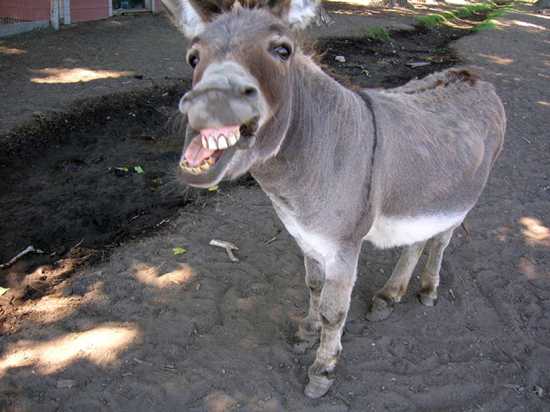
The mother cow index was used until fairly recently in farming areas of the USA. It was an estimation of how many pregnant cows a certain area of land can potentially support. Even to non-dairy farmers, this gave a good indication of the fertility of the land. Donkeypower, on the other hand, is analogous to horsepower, except that it is 250W, only one quarter as strong. A sheppey was invented by Douglas Adams and John Lloyd as the minimum distance from which sheep look picturesque, stated to be 1.4km. In the metric system kilograms measure mass but in the imperial system pounds measure weight force, a slightly different concept: in zero gravity you still have mass but have no weight. A slug is an old imperial unit of mass. It is just less than 15kg. To measure or compare huge masses, elephants are used. The average weight of an adult male African bush elephant (usually the type used for such measurements) is 5.4 tones, and so this is 1 elephant. Dinosaurs and whales are often measured in elephants.




